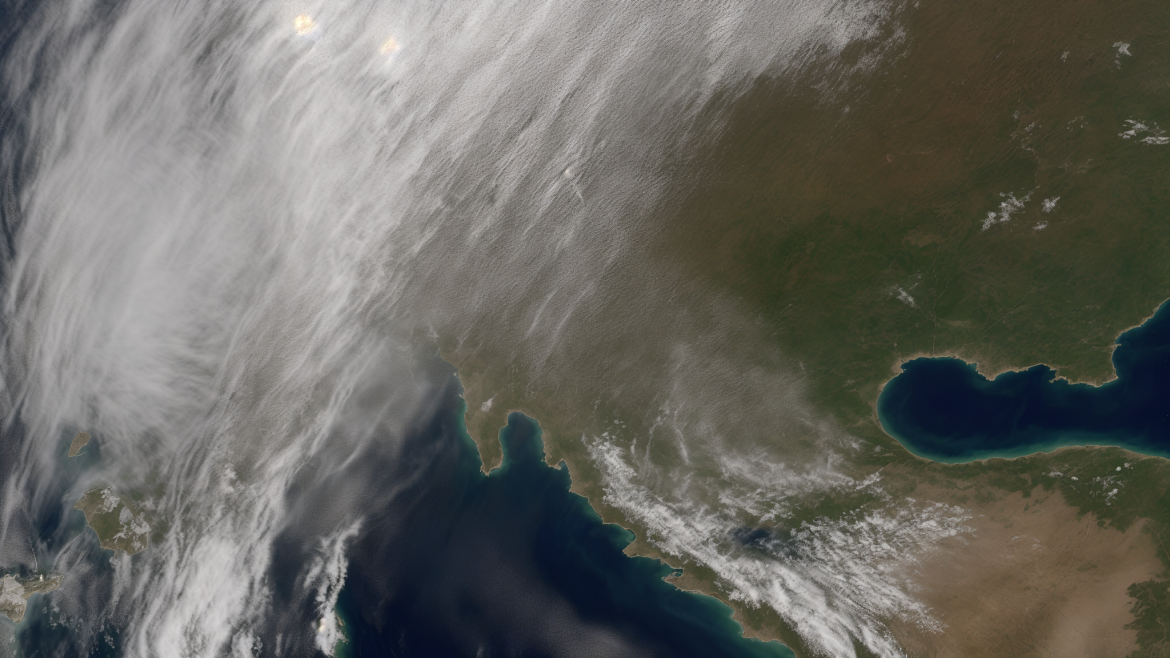A blocking anticyclone raises the thermometer across the country
In the coming days, Spain will experience an exceptional weather situation for this time of year, with very high temperatures and melting of the snow accumulated with the storm ‘Juan’. This is due to a “deep and intense blocking anticyclone” that will affect a large part of the troposphere and that will give rise to weather with “unique characteristics in the world”, according to Meteored expert Francisco Martín.
This subtropical phenomenon will cause many areas of Spain to register record values in some meteorological variables related to the temperature at 850 hPa and the geopotential at 500 hPa. This means that we will have very stable weather, with almost cloudless skies and very high temperatures for the month of January.
“The percentile maps indicate that the values for Spain are the highest with respect to the rest of the world, both in intensity, as well as in extension and duration of the two variables analyzed and shown,” said Martín, who added that “according to these maps, at about 5,500 meters of altitude (500 hPa) the temperatures will these days be in the highest range of the series available, possibly breaking records in Spain, Portugal, Morocco and Algeria”.
The same happens with temperatures at about 1,500 meters (850 hPa). The values predicted for January 25, and other days and times, may reach maximum values of the series in the studied area. “There is no doubt that elsewhere on the planet temperatures at 1,500 meters can be higher, but when compared to the modern historical series, the highest values are located over large areas of Spain,” according to the Meteored spokesperson .
Spring temperatures and thermal contrasts
With this situation, daytime temperatures on the surface will be very mild and from this Wednesday they will exceed 20 ºC in many places in Spain. It could even reach 25 ºC or more in areas of the south and south-east of the peninsula, as well as in the Canary Islands.
At night, on the other hand, with clear skies, temperatures will drop a lot and the thermal contrasts between day and night will be significant in the areas of the interior of the peninsula. Thus, some maximum temperature records could be exceeded in the interior of the peninsula, especially in the Northern Plateau, warns Meteored.
In fact, according to eltemps.es’ latest temperature analysis, warm days in January have doubled or even tripled in Spain since the 1960s, and now account for 25% or more of the month as a whole the territory This means that January, which is the coldest month of the year in Spain, has more and more days with high temperatures, especially in the highs.
A study with centuries-old data confirms this
To check whether warm days have really increased in January, the portal has examined maximum temperature data for the period 1961-2023 for various points in Spain and calculated the days each year exceeded or equaled the threshold. Then he added them up by decades and calculated the differences.
The map at the top of this note shows the change in days above the percentile threshold in the decade 2014-2023 compared to 1961-1970, so the increase in days considered warm is evident across the country, with only one exception: Izaña (Tenerife), whose station has a decrease of -1.2 days, which could practically be considered as natural variability.
In general, the increase is greater in areas of the interior of the country, the south and the Mediterranean. Warm days have doubled in cities such as Madrid, Conca and Soria. In the south, Málaga and Jerez de la Frontera have doubled them, while Almeria has tripled them.
To verify whether the warm days in January have really increased, the data of centennial stations in Spain have been analysed: Barcelona – Fabra, Zamora, Madrid – Retiro, Daroca and Tortosa. In all of them, warm days and very warm days have increased significantly since the 1920s. This increase, moreover, has accelerated in the most recent decades.
For example, in Barcelona – Fabra, a station located in the Serra del Collserola, above the city and 415 meters above sea level, warm days have multiplied by 4 since the last century. The same goes for very warm days, which have gone from about 1 per year to about 4 or 5. In fact, there are more very warm days today than warm days in January than there were in the decades of 1920 to 1990, concludes eltemps.es.

